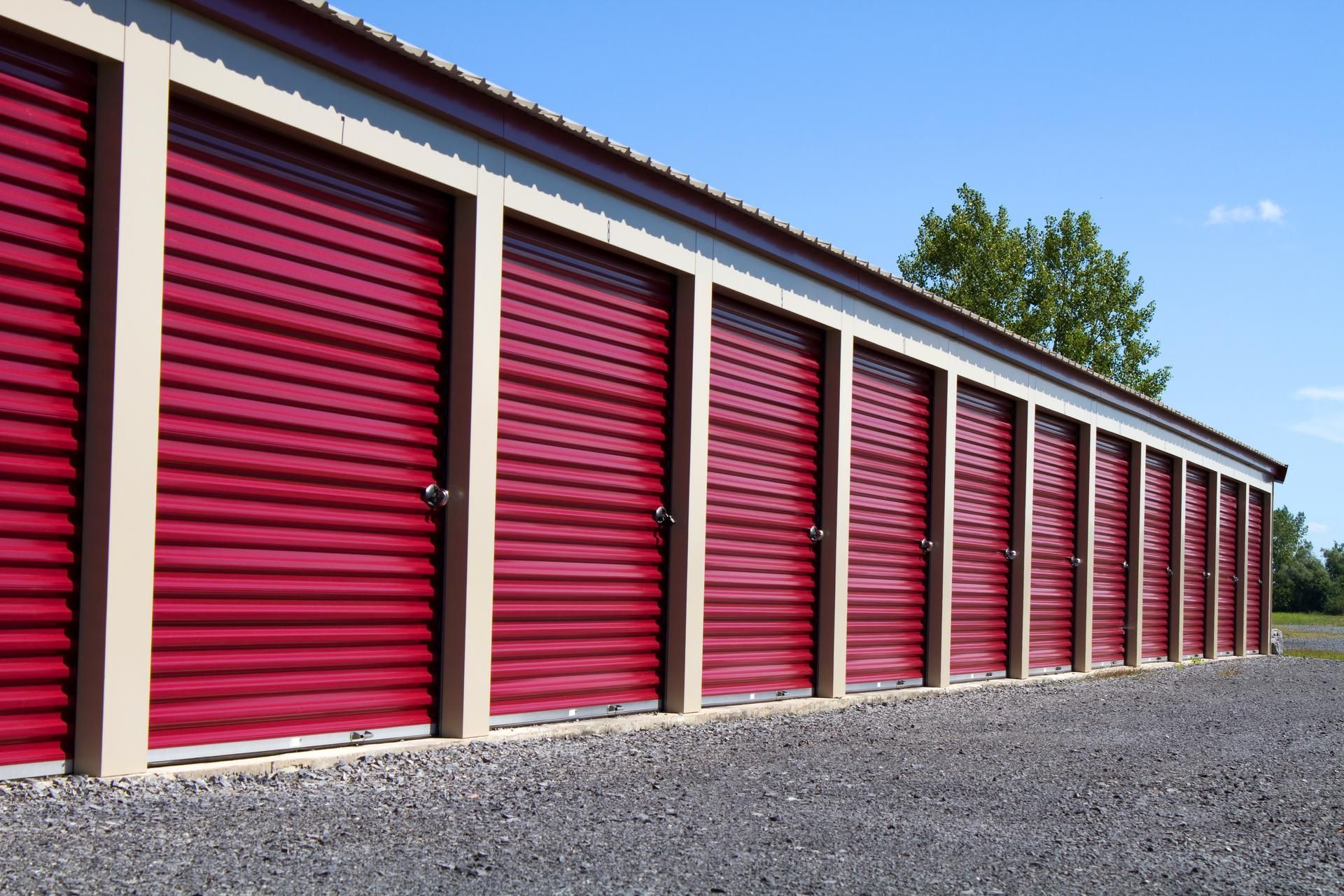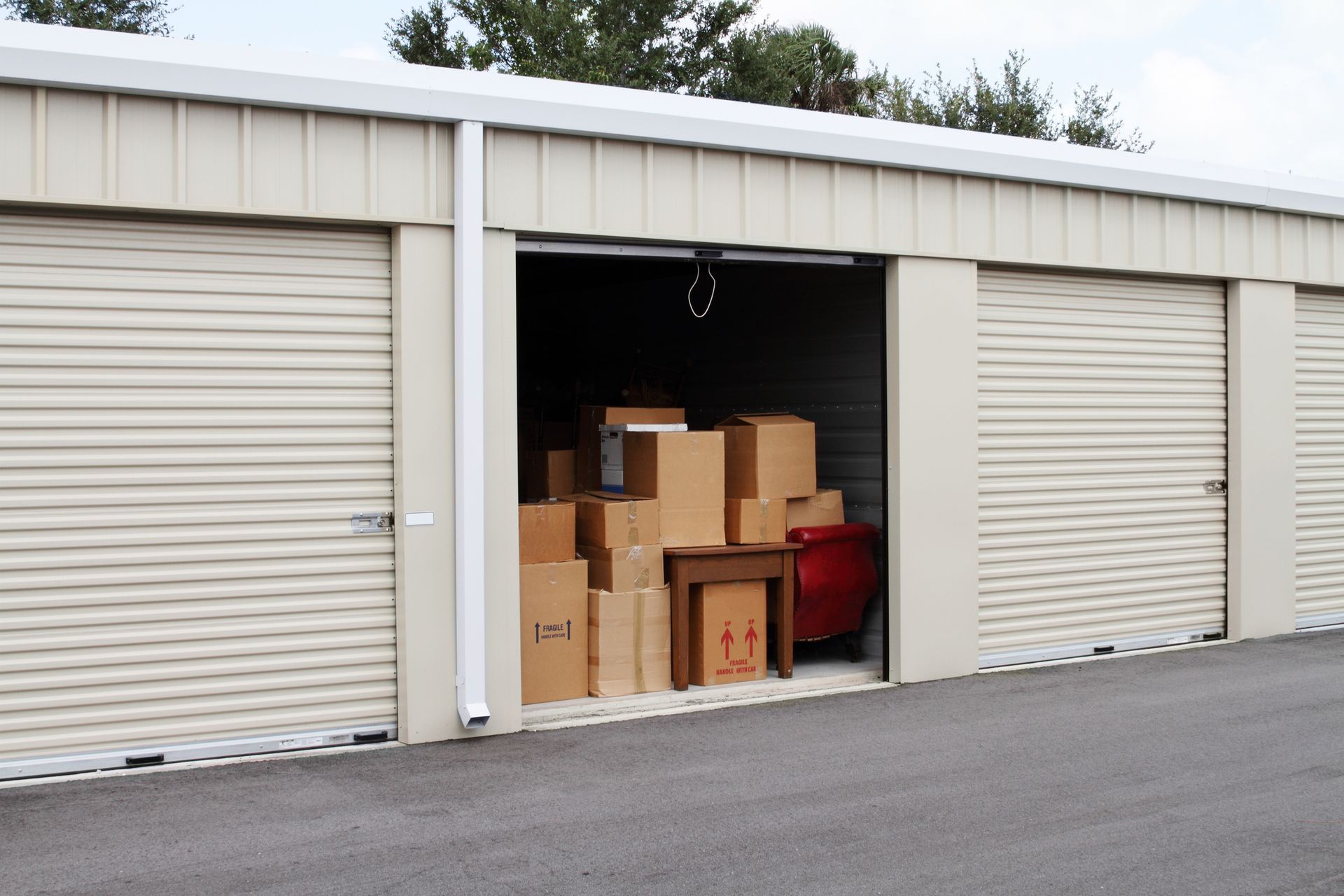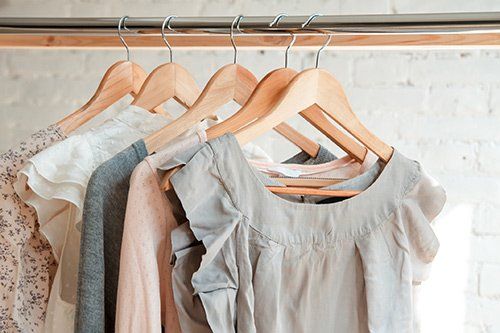
HOW TO EFFECTIVELY USE SELF-STORAGE FOR SEASONAL CLOTHES
Living on the Central Coast of California offers you the chance to enjoy a beautiful climate. The weather may be beautiful year-round. However, you still need to dress for each season to be comfortable.
Whether your idea of enjoying the great outdoors is sitting in the park with a good book or taking to the slopes or waves as the seasons change, you need to have the right clothes easily available when you need them. Keep your fall and winter clothes accessible by storing your spring and summer clothes away until you need them next year.
WASH AND DRY ALL CLOTHES BEFORE STORING THEM
When it comes to storing clothes, it may seem natural to wash all your clothes that were recently worn. Nevertheless, if your clothes from last season have just been sitting in the closet for a while, you may be tempted to just put them in a box and store them. However, it's important to wash all your clothes just before storing them.
Also, store delicate clothes separately. Delicate clothes that are just for one season should be washed separately according to instructions on their tags. Give them plenty of time to dry before storing them.
If you pack away wet or even damp clothes, you may find that they end up musty and moldy when you retrieve them. Just one damp clothing item can leave all the surrounding clothes smelling awful, and you may end up choosing to dump the clothes. Save yourself the trouble and be sure to dry clothes before storing them for the season.
PACK ALL YOUR CLOTHES (EVEN T-SHIRTS) WITH CARE
You may carefully button your favorite dress shirt before carefully folding it and wrapping it with tissue paper. On the other hand, you may be tempted to quickly fold T-shirts and pack them into a box without much care. After all, they're sturdy, right? Not so fast.
According to The New York Times, folding your T-shirts can help keep them looking good. Fold the sleeves of each T-shirt toward the back, and then fold it in half only once in a crosswise position. That way, you won't have to create extra creases that can fold over the image on your shirt. It's preferable to fold T-shirts for storage, rather than hanging them.
CHOOSE THE RIGHT HANGERS FOR CLOTHES YOU PLAN TO HANG
You may choose to hang up some clothes in your self-storage unit. If you do so, be sure that you choose the right clothes hangers for storage. Wire hangers should be avoided for nearly any clothes. Be sure you opt for padded hangers if you're going to store coats, jackets or other large clothing items.
Dresses are best stored from hangers with loops that can support the garments. You don't want dresses to fall and stay on the ground for the long period of time you may plan to store them, so be sure that they are secure on the hanger. Otherwise, it may be best to fold and store them.
GO FOR PLEASANT SCENTS WITH STORAGE
Consider storing your clothes with pleasant scents. Moth balls are often used with clothes storage, but that should not be necessary with a self storage unit. Instead, try storing your clothes alongside sachets in your favorite scents or even cedar. That way, you will be met with wonderful scents when you go to retrieve your clothes.
Finally, keep in mind that choosing a self-storage facility that is reliable and secure is important. Whether you need short-term storage for seasonal clothes or want to store outfits for a long time, Sutters Fort Self Storage LLC can meet and exceed all your storage needs. Your storage unit will be available 365 days per year, so you can get your clothes whenever you need them.
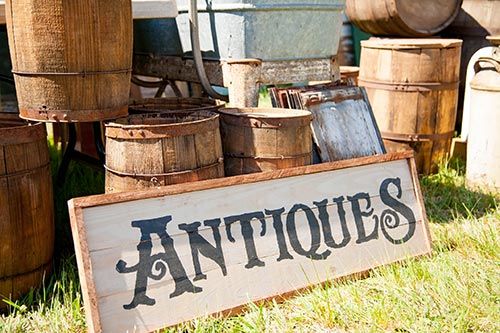
Purchasing antique furniture to sell once the furniture pieces have been cleaned up and repaired can be a unique self-employed job opportunity. Whether you fix up antique furniture as your primary source of income or as a side hobby, you'll likely be curious about what you can do to better manage the furniture that you're buying.
Filling your own home or workshop with antique furniture can quickly lead to frustration due to a lack of space. Renting a storage unit can be an excellent option, especially once you consider the following benefits that a storage unit comes with.
AVAILABLE SPACE
If you're often cleaning and repairing antique furniture, you likely have a workshop that you do most of your work in. When you're regularly bringing home new pieces, you could run into an issue where your workshop is cluttered and difficult to work in.
When you have a storage unit available to you, you can move furniture that's waiting to be sold or not in your immediate plans to repair somewhere safe for later retrieval. You can keep inventory of everything by taking photographs before furniture is placed into storage so that you're always aware of what's in storage.
SUPPLIES KEPT OUT OF THE WAY
Your workshop contains a large variety of supplies for you to properly fix any antique furniture that you buy. While you'll need a lot of these supplies readily available, if you have a smaller-sized workshop or supplies that are used only on occasion, you may want to use your storage unit for some of your supplies.
You can rent a storage unit that's climate controlled to store a lot of your supplies that are needed for fixing up antique furniture.
INSURANCE COVERAGE
One of the reasons that you may be concerned about storing your antique furniture in a storage unit is not being able to keep an eye on everything. This can especially be a concern when you're storing furniture that is worth a lot of money.
Luckily, you can get insurance for the contents of your storage unit so that you can have some peace of mind over the protection of your items in the event of a disaster such as a flood or a burglary.
DISCOUNTS FOR LONG-TERM STORAGE
The best option when picking out a storage unit is arranging a long-term storage situation. Some storage companies even offer one free month of rent when you sign up for a full year of storage or offer a fixed rate that won’t increase for a few years. When long-term storage is the best solution to help with your business, seeking discounts and price-lock guarantees is a necessity.
TAX WRITE-OFFS
Since renting a storage unit will allow you to have more space for your business and even help with growth due because you will be able to carry a larger inventory at once, you can get discounts in other ways. One thing you may not have considered is being able to write off the cost of storage in your taxes.
Ask for proper receipts to ensure that the costs of your storage unit are manageable. Document everything so that you will be able to get a storage unit without it being too expensive. As a small-business owner, you'll need to have all the information you need when it comes time to pay taxes.
With all the benefits that come with renting a storage unit, you should become familiar with what you can expect and how renting a unit will help for your business. If you're interested in storing your antique furniture safely, feel free to contact us at Sutters Fort Self Storage LLC to arrange business storage.
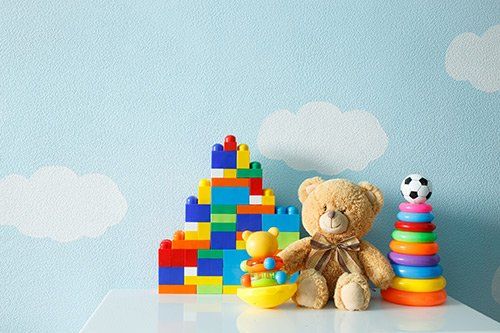
Your kids have a lot of toys, and it's hard to keep track of them all. In fact, too many toys can actually make your children feel overwhelmed, according to some psychologists, and can lead to toy hoarding, selfishness and the inability to simply enjoy a single toy's attributes.
If you are wishing to put some of your kids' toys away where they cannot find them, then a self-storage unit is a great idea. A storage unit is a locked and secure personal building space that you can rent by the month or longer and is able to house a great number of things, from clothing to toys to equipment.
Before you place just any of your kids' toys in a storage unit, do these things first. It will make the transition much easier and allow you to enjoy their favorite toys when it's time to bring them out of storage again.
Get Your Children Involved
Gather your kids into their toy room or bedrooms, and ask them to choose their favorite toy. After they have made their selection, ask them to choose another toy, then another, until they have acquired a small collection of their favorite play items.
If your children consistently grab the same type of toy, like a doll or toy car, ask them which of the ones they have chosen is their favorite. Then have them grab a new toy to replace the lesser-liked of the two. The goal of this exercise is to allow your kids to pick out their favorite variety of toys so you can place the remaining items in storage.
Sanitize Toys for Storage
Toys carry a great variety of bacteria and germs, including the long-living strep strains. Kids put toys in their mouths or play with cloth, plastic and wooden toys without washing their hands, transferring germs and bacteria from the bathroom or the outdoors to their play things.
Clean wooden and plastic toys using safe cleaning agents, such as water and vinegar mixtures, to remove bacteria and germs. Soft toys can be placed in the dryer for several minutes at a time. Books should be sprayed with a natural cleaning spray and then laid open to dry. When you sanitize toys for storage purposes, you help prevent the spread of bacteria while they are left in bins or bags.
Choose Bins Over Bags
Garbage bags may be the most obvious choice for loading up toys for storage, but they are not the most ideal. To keep toys organized, safe, and easy to transport, use colored plastic bins with lids instead. Each bin color can house a different type of toy, or simply be assigned to a single child so they toys stay organized.
Place heavier toys on the bottom of bins while putting stuffed animals and fragile items on top. Toys that come with pieces should be boxed or bagged prior to placing them in a storage unit provided by a self storage facility.
You will want to rotate the toys you place in storage every few months so your children have "new" toys to explore as they grow bored of their current favorites. Repeat the process of toy selection after pulling items out of storage, then restore toys until it's time to rotate them again.
If your kids have too many toys and don't play with them all, placing them in storage is an excellent solution. Your children may begin to enjoy their toys more wholly when they don't have distracting options to choose from. We offer a variety of self-storage solutions at Sutters Fort Self Storage LLC. Allow us to help you select the right storage unit for your needs today.

IMPROVE AIR CIRCULATION
A self-storage unit is not going to allow for much air circulation when the door is closed and locked. However, you can try some things to improve air circulation inside the storage unit and prevent moisture damage.
Try spacing out the items in your storage unit so air is able to move freely instead of being trapped. Instead of having items stacked on each other and restricting airflow, try using wire shelves so that air can circulate around items you are concerned about.
AVOID STORAGE BAGS
It can be very tempting to store your belongings inside plastic bags that are sealed, but these can cause harm to any item inside a bag. The bag will trap moisture inside since moisture cannot get in or out. When combined with the humidity in a storage unit that does not have climate controls, you could find mildew on items that are in sealed plastic bags.
Even if the storage bags are not sealed, those bags will trap air and prevent air circulation.
STORE FURNITURE UPRIGHT
If you have large furniture, like a couch or chair, you should store the furniture in its normal upright position. You may want to store a long couch on the side so that it takes up more room vertically than horizontally, but doing so can cause moisture damage. The same can be said of taking the legs off a table and storing the item on its side rather than upright.
Storing furniture upright prevents moisture damage because the furniture legs prevent the item from touching the storage unit floor. Air will still be able to circulate around the entire item instead of being trapped against the side that is directly touching the floor. Storing a couch sideways could reveal moisture damage on the fabric that was resting on the ground, and a sideways table may have damage along the wooden edge of the table that you see every day.
If you do not have the room to store furniture in their proper position, consider putting down a layer of plastic to create a moisture barrier between your items and the concrete floor. You can also use a wooden pallet to allow more air circulation and keep the item off the floor. While not as ideal of putting the furniture upright, it will get the job done.
USE DESICCATORS IN SEALED BOXES
Do you know those little packets that come with inside the boxes of new electronic devices with the warning not to eat? Those are called desiccators, and they work by absorbing moisture inside the box so that the items inside are not damaged. You can purchase these in bulk and use them in your sealed boxes to prevent moisture damage.
Some items will actually work better in sealed boxes with desiccators, such as clothing that can have air trapped within the fabric. Of course, electronic devices in closed boxes can benefit from using desiccators to protect the internal circuit boards from getting moisture on them.
CREATE A DEHUMIDIFIER WITH CHARCOAL
While a dehumidifier will be ideal in a storage unit to prevent moisture damage, you may not have access to an electrical outlet inside the unit. That is why you will want to make a dehumidifier that uses charcoal briquettes.
All you need to do is place some charcoal briquettes into a bucket so that they can absorb the moisture in the air. Be sure not to use briquettes that have been pre-soaked with lighter fluid, since they will cause a bad odor inside your storage unit.
With these tips in mind, you'll be prepared to rent your storage unit from Sutters Fort Self Storage, LLC. With units that start as small as 36 cubic feet, you'll be sure to find a storage unit that meets your needs.
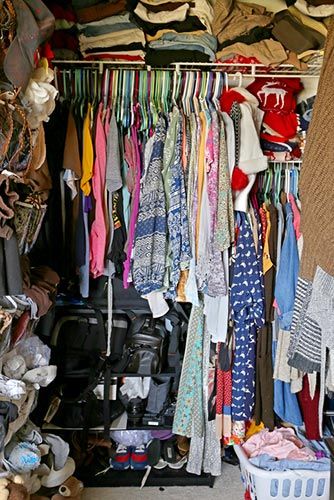
BRING IN A WARDROBE RACK
You can't install a pole for hangers by nailing anything to the wall, but you can bring in a wardrobe rack on wheels. This rack allows you to hang some of your clothes rather than fold them so you can protect the fabric and avoid wrinkles. Racks often have shelves on the top and bottom that are perfect for hat boxes and other delicate items.
An alternative to a wardrobe rack is a wardrobe box. Buy one of these from a moving company to store your hanging clothes instead. A wardrobe box has a bar across the top of it for holding clothing on hangers. The advantage of a box is that it performs double-duty of hanging clothing and boxing it up too.
Choose clothes to hang carefully because heavy sweaters will pull out of shape when left on hangers a long time. It's best to fold sweaters and knit items and hang only clothing that won't stretch. Also, be sure to use fabric or plastic hangers so there is no risk of rust stains developing from metal hangers.
CHOOSE TRANSPARENT PLASTIC STORAGE TOTES
Plastic storage totes are the best choice for storing clothing. Plastic offers more protection than cardboard, and the rigid construction holds your clothes in position better than plastic bags. If you choose the transparent variety, you can see the clothing inside without having to dig through everything if you're looking for a particular item.
If humidity is a concern, you can add a desiccant pack to each storage tote before you close it. You may also want to toss in a cedar ball or block to repel insects. Although vacuum bags reduce the amount of storage space you need, it's possible your clothing could be harmed if kept in them for an extended time. Your clothing needs adequate air circulation and dark storage conditions for the best chance of coming out of storage in the same condition it went in.
REMOVE STAINS BEFORE STORING
Look over each item of clothing before putting it in a tote or wardrobe box. It should be clean and free from stains. If a stain is left on fabric for months in storage, it may never come out. Ideally, the clothing should be repaired if needed, smelling fresh, and ready to wear when it's stored.
You'll be happy you took the time to prepare your clothing properly when the season changes and you take it back out of storage. Your family's clothes will be ready to wear without the fuss and trouble of making repairs and scrubbing stains to get them in shape.
CHECK YOUR STORED CLOTHES OCCASIONALLY
When using a self-storage unit for seasonal clothing, you'll be visiting your clothes a few times a year to keep watch on their condition. If you're putting your clothing in storage for the long-term, then it's a good idea to visit the unit occasionally to make sure the clothes are dry and safe. Even if you'll be checking them at the change of seasons, you may want to drop in after a big storm with prolonged heavy rains. Mold, insects, and rodents are the enemies of clothes in storage.
A storage facility is a better option than storing your things in a shed on your property because you'll have better protection for your clothing. But you should still check on your clothing occasionally if you can.
Fabrics you wear every day tolerate storage conditions much better than exotic materials, such as fur and leather. You should keep expensive clothing, delicate fabrics, fur, and leather in your home rather than a storage unit unless the unit has climate-controlled conditions.
If you have questions about renting a unit for your family's clothing and other belongings that you want out of the way, give Sutters Fort Self Storage a call
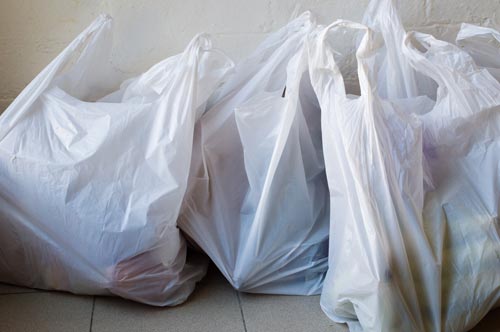
In fact, you may have the following storage essentials already available in your kitchen. Try using these items to protect and organize your possessions.
1. Garbage Bags
A simple kitchen garbage bag can easily turn into a dust cover for your favorite clothing. Simply grab a bunch of clothing that you want to store and put each item on a hanger. Then, pull the garbage bag up from the bottom so that the mouth of the bag is at the top of the hanger.
Cinch the bag closed, and to hold it in place, slip the tie closure over the hanger. Then, you can hang these clothes on a clothes rack in your storage unit or inside of a box designed for hanging clothes.
If you like, you can make your own hanging box. Cut two holes into the top part of the opposing sides of a large cardboard box and slip in a piece of PVC pipe so it runs from hole to hole. Put an end cap on the pipe so it doesn't slip inside the box. Finally, hang your clothes from the PVC pipe and seal up the box. Then, when you take your clothes out of storage, you won't need to worry much about wrinkling.
2. Glad Press’n Seal
Glad Press’n Seal is a product similar to wax paper, but when you press it on certain items, it sticks down firmly. This kitchen product can also be useful in your storage locker. If you have any boxes that don't have lids, you can close them up using Press’n Seal.
For example, if you have lost the lid to a plastic storage bin, you can cover the container with Press’n Seal. You can also use the product to hold together things you want to stay together, such as sand toys in an old plastic bucket or a plastic set of storage drawers.
3. Plastic Bags
Freezer and sandwich bags can also be useful for keeping your storage area organized. If you are packing boxes full of lots of little items such as earrings, crafting supplies, small toys, or nuts and bolts, plastic bags can keep your items organized.
Bags make it easier for you to unpack the boxes once you have taken them out of storage. Additionally, if you need to remove anything while the items are in storage, you’ll have an easier time looking through a pile of bags than sorting through a huge box of jumbled items.
If you have dismantled furniture in your storage unit, you should consider putting the hardware into a plastic bag. Then, tape that bag to the furniture.
4. Cling Wrap
Often called saran wrap, cling wrap can also be useful when you’re setting up your storage area. If you don't have freezer bags, a bit of cling wrap and some packaging tape can help organize small items. You can also use cling wrap to cover paints, makeup, or anything else that may be prone to damage from the air.
You may also want to use cling wrap like professional shippers do. In particular, if you plan to ultimately ship the boxes in your storage locker or transport them a long way, you could put a bunch of boxes on a pallet and then wrap them with cling wrap.
For more tips on setting up your storage locker, contact us directly. At Sutters Fort Self Storage, LLC, we have a range of storage solutions for both personal and business clients.
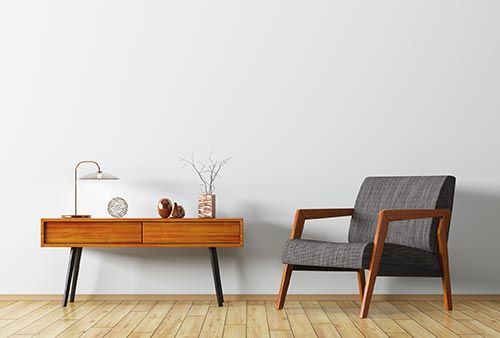
1. CLEAN THE FURNITURE FIRST
Any slight stains and spills will only become worse when given months to settle into the wood. Plus, cleaning and polishing your wood re-balances its moisture levels to reduce the risk of cracks and rot.
To clean your wooden furniture, follow these steps:
- Dust the item with a soft cloth to remove surface dust.
- Dip a rag in a mixture of mild dish soap and water.
- Wring your rag out well and wipe down the furniture.
- Use a cotton swab dipped in the dish soap mixture to remove grime from any nooks and crannies.
- Let the furniture dry.
- Apply a layer of furniture polish and buff it into the furniture with a soft cloth, using circular motions.
2. DISASSEMBLE THE FURNITURE IF POSSIBLE
If your furniture comes apart easily, as do many bookshelves and entertainment centers, disassemble it. This will reduce your chances of banging the furniture on something as you move it into the storage unit. Place any screws or washers in a resealable bag and put the bag inside a drawer or on a shelf where you'll find it easily when it comes time to put the furniture back together.
3. CHOOSE A CLEAN, WELL-MAINTAINED STORAGE UNIT
Make an appointment to tour the storage facility before you sign a rental agreement. You want to ensure the facility is free from pests like wood bees and carpenter ants, as these may wreak havoc on your furniture. Ask the manager about the facility's pest control policies. Also, make sure the units look generally clean and well-kept so you don't have to worry about your furniture being exposed to grime and moisture.
4. CHOOSE BREATHABLE COVERS
As long as you're in a reasonably warm and dry climate, like that of Santa Cruz, it's best not to fully encase your wooden furniture in plastic. Encasing furniture in plastic will just trap moisture against it, increasing your chances of mold. Just drape the furniture in a light cotton sheet. Secure the sheet around the legs using zip ties or rubber bands, if you desire. The sheet will keep dust from falling on the furniture while still allowing the item to "breathe."
5. DON'T STORE THE FURNITURE DIRECTLY ON THE GROUND
While furniture is made to sit on the ground, it's best to set it on a pallet, or at least a tarp, while it's in storage. If anything were to spill in a nearby storage unit, you want your wooden furniture protected from the spill, not wicking the moisture up from the ground.
6. BE CAREFUL WHAT YOU PLACE ON TOP
It's perfectly fine to place items on a wooden shelf, a table, or even a dresser while such an item is in storage. Doing so can maximize your storage capacity! However, it's very important that you're careful what you place on top of your furniture.
Don't place anything made from rubber directly on top of the furniture. The rubber may break down and leave marks on the wood. Also, avoid storing anything made from wool on or near the wood, as the wool may attract moths that can leave stains and nicks on your furniture. If you place anything metal on the wood, check to ensure the item is not rusty first, as the rust may also leave stains.
If you're looking for a clean, safe place to store your wooden furniture, contact Sutters Fort Self Storage. We offer a variety of storage solutions in Santa Cruz, CA.

1. USE PROPER LIFTING TECHNIQUES
You wouldn't be the first one to strain your back or pull a muscle in your shoulder when lifting a box. To protect against injury, make sure you:
- Bend at the hips and knees only when lifting an item or setting it down.
- Keep your back straight, looking right ahead. Do not bend forward as you lift.
- Keep your feet shoulder-width apart to provide a wide, supportive base.
- Hold the item close to your body as you carry it.
- Do not twist your body when carrying a heavy item.
2. USE A DOLLY FOR AWKWARD, HEAVY ITEMS
Instead of trying to grab onto the edge of a strangely shaped piece of furniture, use a dolly to move it. If you're renting a moving truck to transport your things to the storage facility, the facility often includes a dolly, sometimes for a small fee. Take the time to properly strap the furniture to the dolly so it does not fall off and crush anyone's feet.
3. KEEP WATER ON HAND
If at all possible, load your storage unit in the morning when it's not quite as hot outside. Regardless of when you move, be sure to keep plenty of bottled water on hand and sip it throughout the day. It's far too easy to become dehydrated when you're lifting and moving heavy items on a warm day.
Experts recommend drinking between four and eight ounces of water every 15 to 20 minutes during exercise. Packing a storage unit is certainly a workout, so stick to this guideline. If you do notice signs of dehydration, such as fatigue, lightheadedness, dark urine, and flushed skin, take a break from moving, drink some water, and relax in a cool place until you feel better.
4. STACK BOXES PROPERLY
You don't want a stack of boxes tumbling down on you in your storage unit! To reduce your chances of such an accident, remember to:
- Use boxes of the same size so they stack easily.
- Place heavy boxes on the bottom and lighter ones on top.
- Avoid stacking boxes too high. It's best not to stack them any taller than your body.
- Avoid placing furniture on top of boxes. If you place boxes on top of furniture, make sure you don't overload the piece.
5. ALLOW YOURSELF ENOUGH TIME
When you're in a hurry, you're more likely to trip over something you didn't bother to pick up, stack a box improperly, or even just bang your leg on the door of the storage unit. Plan ahead so you have plenty of time to move items slowly and methodically. Move early enough in the day that you're sure to be done by nightfall, since injuries are more likely when it's dark out.
With the safety tips above, you can move everything into your unit without risk of injury. If you're looking for a safe, convenient storage option in the Santa Cruz area, contact Sutters Fort Self Storage. LLC today.

